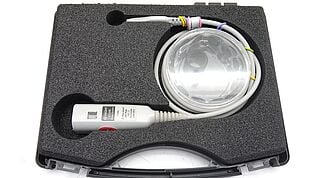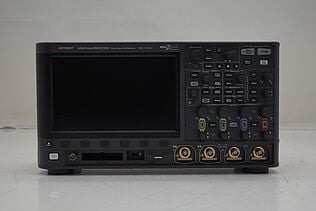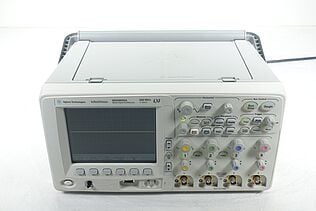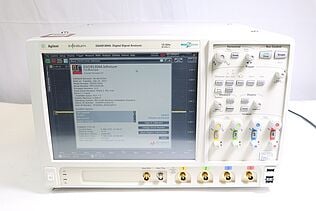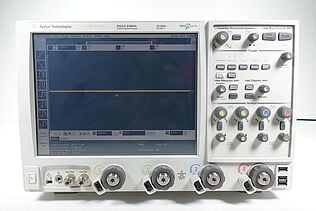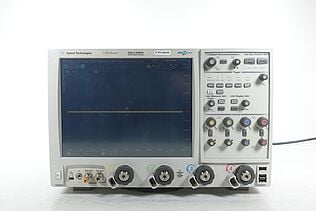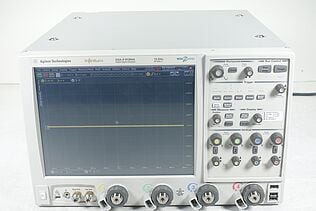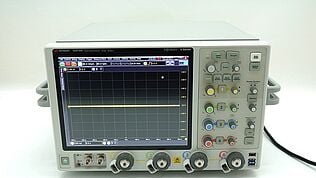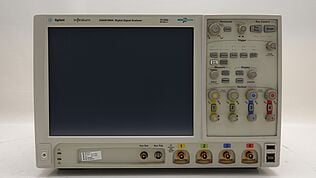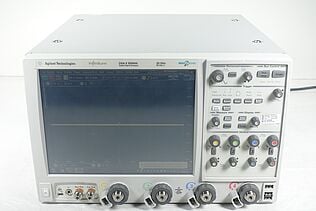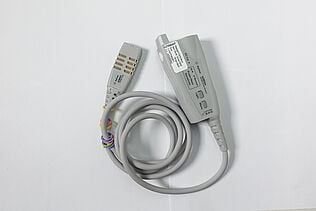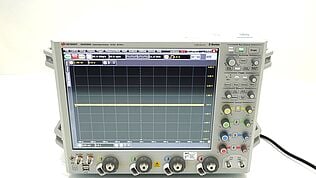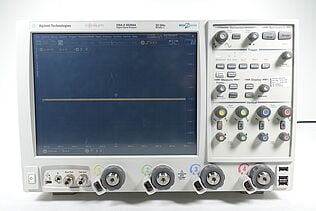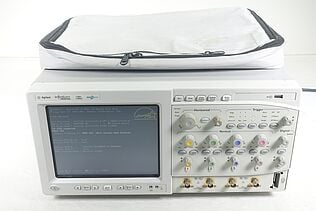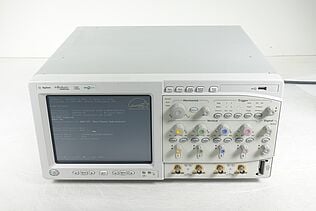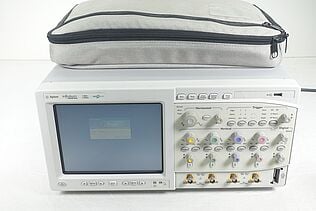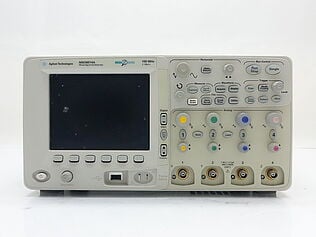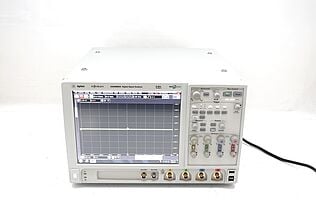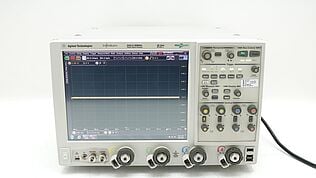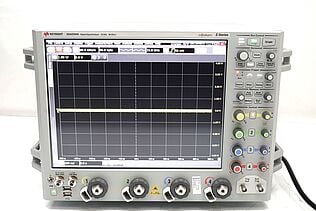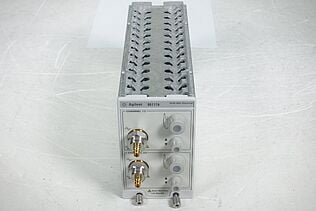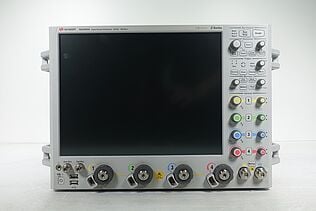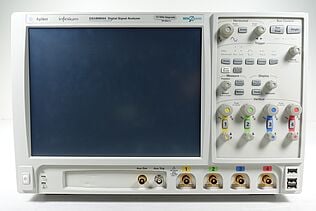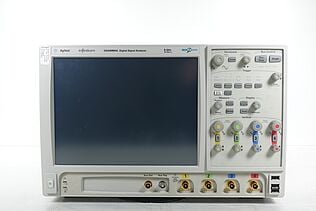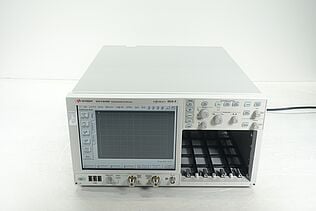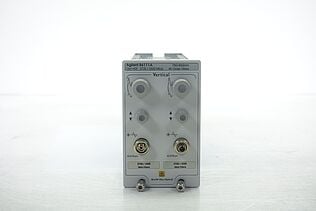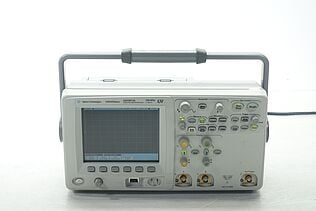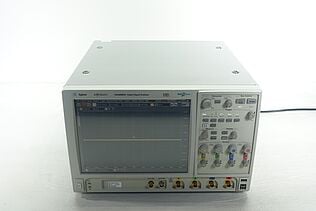- Introduction
- Introduction to Oscilloscope Input Voltage
- Why Is Input Voltage Important?
- Signal Analysis
- Accurate Measurements
- Voltage Terms and Definitions
- Types of Inputs in Oscilloscopes
- Single-ended Inputs
- Differential Inputs
- Understanding Voltage Ratings and Limitations
- Probe Attenuation
- Maximum Input Voltage
- Bandwidth and Input Voltage
- Input Impedance
- Practical Applications in Oscilloscopes
- Electronics Design and Debugging
- Communication Systems
- Power Supply Analysis
- Automotive Diagnostics
- Input Voltage in Digital and Analog Oscilloscopes
- Analog Oscilloscopes
- Digital Oscilloscopes
- Safety Precautions
- Conclusion
- Whenever You’re Ready, Here Are 5 Ways We Can Help You
The world's first oscilloscope was invented in 1893, and while the technology has evolved tremendously, the fundamental principle – observing voltage over time – remains the same.
Since its inception, the oscilloscope has been the window through which engineers and scientists gaze into the real-time world of electrical signals. At the core of this window is the input voltage.
In this article we’ll uncover the intricacies of input voltage and learn its vital role in ensuring clarity and accuracy in oscilloscope readings.
Buy Oscilloscopes at a Great Discount
Introduction to Oscilloscope Input Voltage
An oscilloscope is an invaluable instrument in the toolkit of an electrical engineer. It allows for the visualization of electrical signals, providing insights into their behavior and characteristics. At the heart of its functionality is the concept of 'input voltage' – the electrical potential difference that is fed into the oscilloscope for observation.
| Key Takeaway |
|---|
| Input voltage is crucial for accurate oscilloscope readings, serving as the foundational data that translates into visualized waveforms and informs precise electronic analyses. Ensuring it's correctly managed and understood is vital for both equipment safety and the reliability of measurements. |
Why Is Input Voltage Important?
Signal Analysis
The heartbeat of any electronic device is its electrical signals. These signals, whether simple or complex, define the device's functionality and performance. An oscilloscope acts as a bridge between these abstract electrical variations and the user, converting them into a format we can understand – visual waveforms.
The input voltage plays the starring role in this conversion. It's the raw, unadulterated information that feeds into the oscilloscope, becoming the waveforms we see. An oscilloscope reveals the details of electrical signals, much like a microscope reveals the details of minute organisms. By analyzing these waveforms, engineers can diagnose problems, understand signal behaviors, and improve circuit designs.
Accurate Measurements
The value of an oscilloscope extends beyond mere visualization. For engineers, it's a tool of precision, enabling them to take detailed measurements that can drive design decisions and troubleshooting efforts. But the precision of these measurements hinges on the accuracy of the input voltage.
Two critical facets define the accuracy of the input voltage: its magnitude and its frequency. Magnitude tells engineers the amplitude or strength of a signal, which is vital in applications ranging from audio electronics to power supply design.
Frequency, on the other hand, provides insights into the speed of signal variations, crucial for areas like communication systems or digital circuits.
A slight error in understanding the input voltage can lead to misjudgments in design and analysis, making it imperative for users to ensure its correctness.
Voltage Terms and Definitions
| Term | Definition |
| Peak Voltage (Vp) | The maximum voltage level of a waveform. |
| Peak-to-Peak Voltage (Vpp) | The voltage difference between the highest and lowest points of a waveform. |
| RMS Voltage (Vrms) | Represents the 'effective' voltage of an AC waveform; it's the DC-equivalent voltage which delivers the same power as the AC signal. |
Types of Inputs in Oscilloscopes
Single-ended Inputs
- Common type in many standard oscilloscopes.
- Measures the voltage between the input signal and ground
- More susceptible to noise.
Differential Inputs
- Measures the voltage difference between two input signals.
- Provides higher noise immunity.
- Can measure signals without a direct ground reference.
Understanding Voltage Ratings and Limitations
Probe Attenuation
Oscilloscope probes often come with selectable attenuation ratios:
- 1:1 – No attenuation, direct voltage measurement.
- 10:1 – The actual input voltage is 10 times the displayed voltage.
For example: If the oscilloscope displays 2V with a 10:1 probe, the actual signal voltage is 20V.
Maximum Input Voltage
Every oscilloscope and probe has a maximum input voltage rating. Exceeding this can damage the equipment. Make sure to check that the maximum voltage ratings of both the probe and oscilloscope are compatible.
Bandwidth and Input Voltage
Bandwidth is a measure of the range of frequencies an oscilloscope can accurately display. Higher frequency signals mayhave their amplitude attenuated. Always ensure the oscilloscope's bandwidth matches or exceeds the frequency of the signal being observed.
Input Impedance
Every oscilloscope has an input impedance which can affect measurements. Most oscilloscopes have an input impedance of 1 MΩ. Matching source impedance with oscilloscope input impedance ensures accurate measurements.
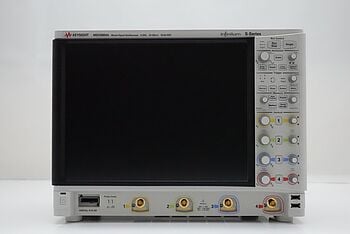
Practical Applications in Oscilloscopes
While oscilloscopes are extensively utilized across various fields of electronics, it's the practical applications that really emphasize the essence of understanding input voltage. Here are some real-world scenarios where oscilloscopes play a pivotal role:
Electronics Design and Debugging
- Scenario: An engineer designs a new type of amplifier circuit. Post assembly, the amplifier doesn’t seem to amplify signals as expected.
- Oscilloscope use: By connecting the oscilloscope to various points in the circuit, the engineer can view the signal waveforms and identify where the signal might be deteriorating or where unwanted noise might be entering. The input voltage can provide clues about component failures or design flaws.
Communication Systems
- Scenario: In a digital communication system, data is transmitted as a series of highs and lows (1s and 0s). However, interference, noise, or other issues can distort these signals.
- Oscilloscope use: Engineers can use oscilloscopes to visualize these digital signals, ensuring that they are clear and distinct. Analyzing the input voltage can help pinpoint issues like signal reflection or crosstalk between channels.
Power Supply Analysis
- Scenario: A technician is testing a new power supply, but the output voltages are fluctuating more than desired.
- Oscilloscope use: By observing the input voltage waveform on an oscilloscope, the technician can check for irregularities or spikes in the output, which might indicate problems with components like capacitors or inductors.
Automotive Diagnostics
- Scenario: Modern cars are equipped with a multitude of electronic systems. Let's imagine a situation where the ignition system of a car encounters a malfunction, causing it to operate improperly.
- Oscilloscope use: Mechanics can use oscilloscopes to observe the voltage waveforms from sensors, actuators, and other electronics. For instance, understanding the input voltage from an ignition coil can determine if it's functioning correctly.
Input Voltage in Digital and Analog Oscilloscopes
The oscilloscope landscape is predominantly divided into two categories: analog and digital. Each type has its own unique method of handling input voltages and presents various advantages and challenges. Let’s explore the core distinctions and their implications.
Analog Oscilloscopes
Analog oscilloscopes function by directly portraying the input voltage on a phosphor screen. The electron beam's vertical position on this screen is influenced by the input signal, painting a continuous waveform as it sweeps horizontally.
The display is inherently intuitive, with the signal's amplitude variations evident in real-time. The brighter spots on an analog display can indicate where the signal dwells longer, giving users a sense of the signal's behavior.
However, this intuitive and direct display comes at the cost of versatility. Some challenges include:
- They do not have the advanced measuring tools of their digital counterparts.
- They're unable to capture and store waveforms for future analysis, making them less ideal for examining intermittent or complex events.
- Their accuracy might fall short when faced with intricate or swiftly changing signals.
Digital Oscilloscopes
Digital oscilloscopes, or Digital Storage Oscilloscopes (DSOs), offer a more layered approach. They first convert the analog input voltage into a digital format using an Analog-to-Digital Converter (ADC). This digital signal can then be processed, stored, and subsequently represented on the screen as a series of discrete data points. This method allows for a deeper dive into the signal, providing opportunities for manipulation and detailed analysis.
The precision of DSOs is one of their standout features. They can automatically measure numerous aspects of a signal, from frequency to rise time. Their storage capabilities allow users to capture waveforms and revisit them later. This feature makes them an invaluable tool for diagnosing issues that might not be immediately evident. They also enable detailed signal processing, like analyzing signals in the frequency domain using Fast Fourier Transform (FFT).
Yet, this precision and versatility come with their own set of challenges, such as:
- Improperly sampled signals can lead to a misrepresentation, a phenomenon termed as aliasing.
- The multitude of features in digital oscilloscopes can be daunting, especially for those new to the field or transitioning from analog devices.
The choice between these oscilloscope types often rests on the specific requirements of a given task. While analog devices offer immediacy and a straightforward approach, digital scopes bring precision and a wide array of analytical tools to the table.
Safety Precautions
When working with oscilloscopes, always remember to do the following:
- Check voltage ratings: Before connecting any signal, always ensure it doesn't exceed the maximum voltage rating of the oscilloscope or the probe.
- Use the right probe: Different probes are designed for different applications. Using a mismatched probe can lead to inaccurate readings or damage.
- Stay grounded: Ensure that the oscilloscope is properly grounded to prevent any electric shock hazards.
- Avoid floating measurements: When measuring a device that isn't at the ground potential, use a differential probe or ensure you're using an isolated oscilloscope.
- Keep equipment updated: Regularly calibrate and maintain your oscilloscope to ensure it provides accurate readings and remains safe to use.
Conclusion
Input voltage stands as a cornerstone in the realm of oscilloscope operation and understanding. It's not just about visualizing signals but ensuring they are accurately and safely represented. Whether you're using an analog or digital oscilloscope, grasping the nuances of input voltage remains pivotal. Inaccuracies or misinterpretations can lead to data errors, which, in critical industries, could have significant implications.
However, the world of oscilloscopes can be a costly one. Quality instruments often come with a premium price tag, especially for budding engineers or small-scale operations. This is where smart choices can make a difference.
If you're on the lookout for reliable, high-quality oscilloscopes that won’t break the bank, consider Keysight's Used Equipment Store. With a large variety of oscilloscopes, network analyzers, signal analyzers and more, Keysight has the premium equipment you need. With a reputation for quality, certified calibration and a wide selection, it’s the place for dependable instruments at a fraction of the original cost.

Browse Oscilloscopes at a Great Discount
Select up to 3 instruments to compare
Enable Notifications
In order to use this feature, you need to enable notifications.
Manage notification preferences
Whenever You’re Ready, Here Are 5 Ways We Can Help You
- Browse our Premium Used Oscilloscopes.
- Call tech support US: +1 800 829-4444
Press #, then 2. Hours: 7 am – 5 pm MT, Mon– Fri - Talk to our sales support team by clicking the icon (bottom right corner) on every offer page
- Create an account to get price alerts and access to exclusive waitlists.
- Talk to your account manager about your specific needs.

